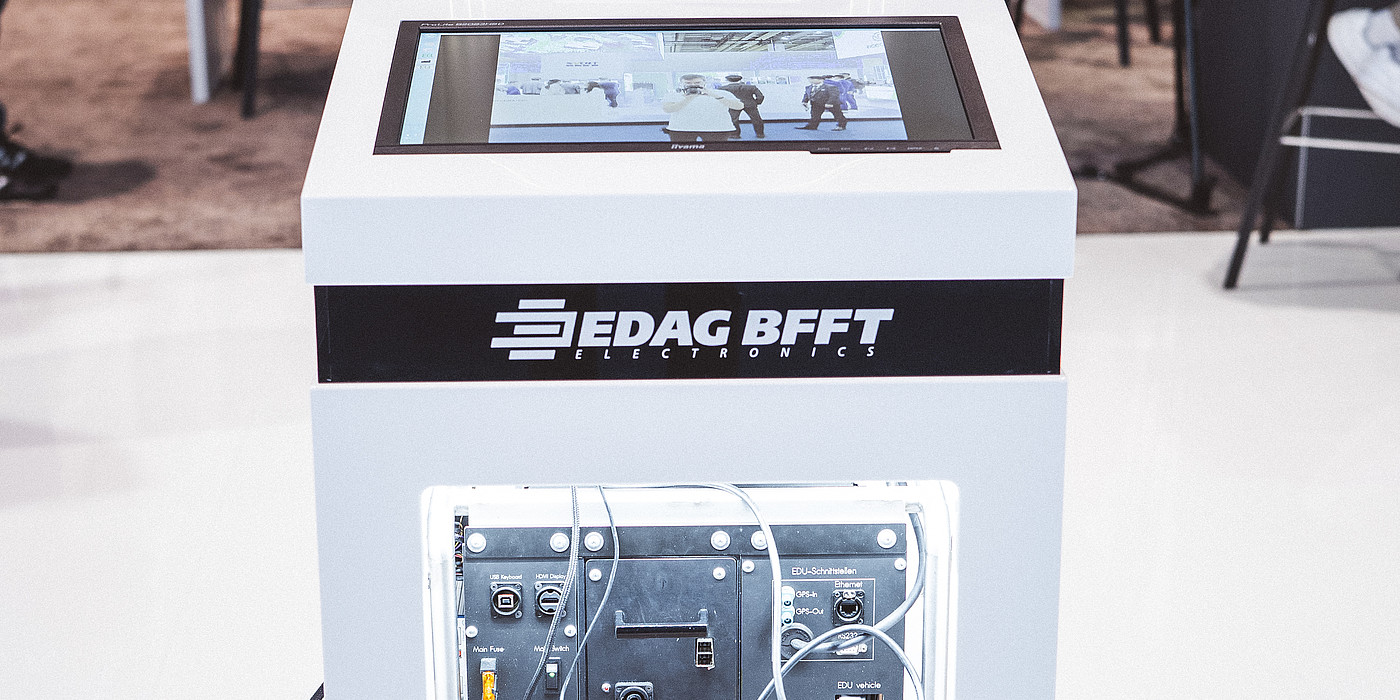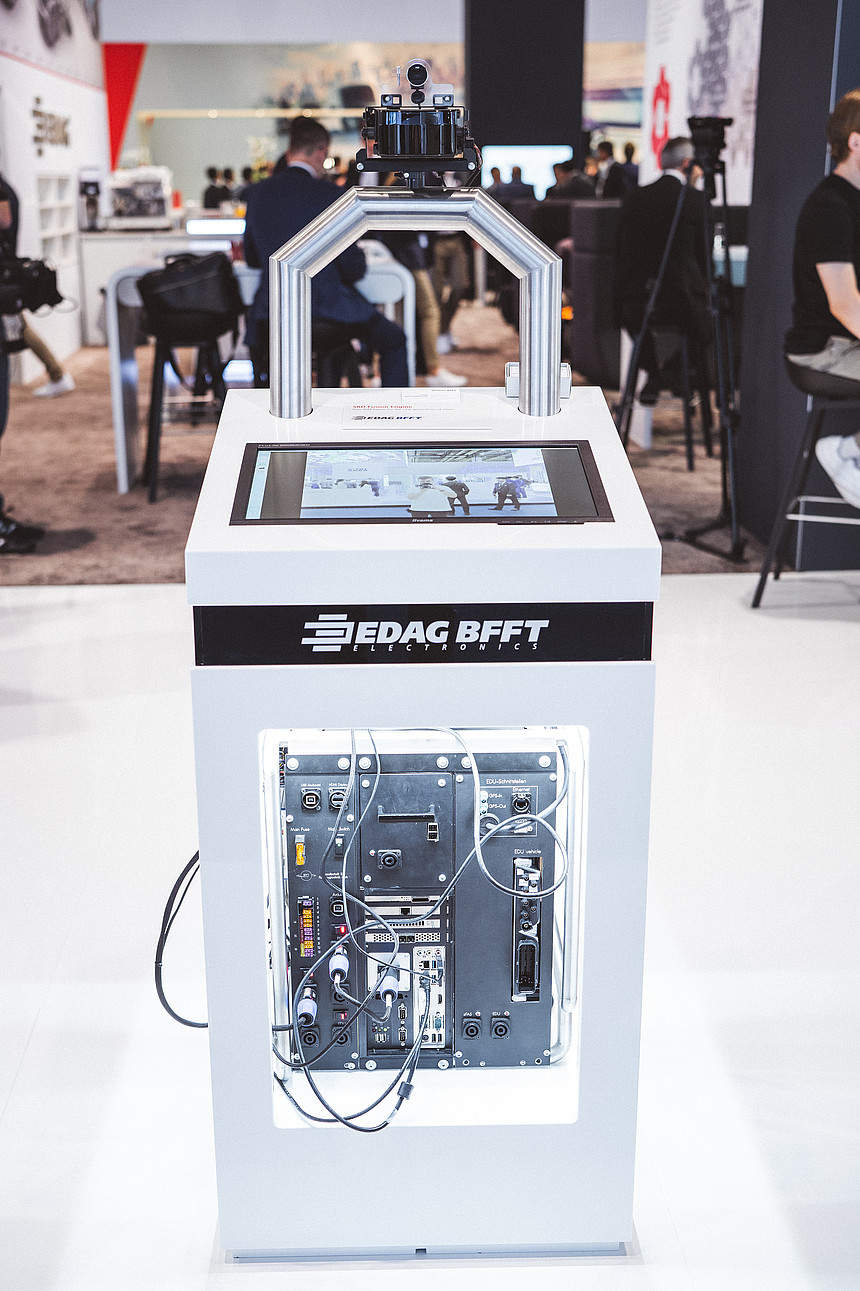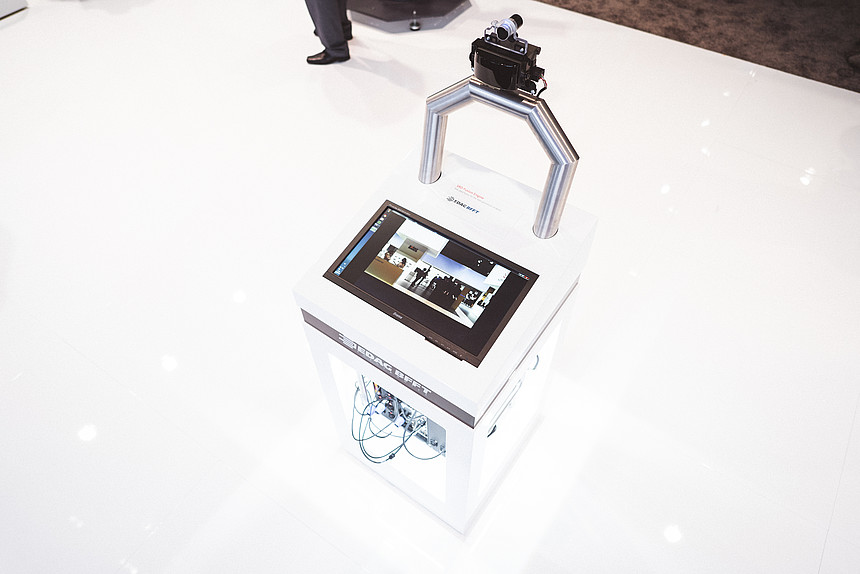EDAG BFFT Electronics' SRD Fusion Engine uses the second method and is proving to be an extremely effective tool in in the hands of development engineers working on driver assistance and automated driving functions. The SRD Fusion Engine raises vehicle environment modelling to a new level:
- 360 degree 3D data fusion based on sensor raw data from RADAR/LiDAR and camera
- Mapping of static and dynamic objects (grid map, SLAM) with accumulated 3D point clouds
- Prediction of movements outside of the sensor's field of view by means of post-processing
- Calculation of metrics for the quality of object recognition
- Retention of the reference of all results to the initial data
- Modern, modular architecture for the quick and easy implementation of further sensors or function modules
- Availability of all information from the entire test run for the development engineers with offline application of the system
With the SRD fusion engine, static and dynamic elements in the vehicle's environment are identified by means of radar, LIDAR and camera data, and this information can be used to interpret or predict complex situations. To this end, the SRD fusion engine fuses the data of the different systems into a 360 degree image, records object movements, and develops a 3D map of the vehicle's surroundings. Additional types of sensor such as DGPS or ultrasound can also be integrated into the SRD fusion engine.
Simple expandability with additional modules, for object classification or lane recognition for instance, continues the modular design.
With its modular functions programmed in C++, the SRD Fusion Engine can be used in the usual automotive frameworks ADTF and ROS.
Possible SRD Fusion Engine applications are:
- The evaluation of vehicle-based sensor fusion, leading to significant savings in time to start of production
- The evaluation of object recognition with detailed 3D models as references
- The evaluation of various driver assistance or automated driving functions
- Sensor performance tests, analysis of sensors and their limits


